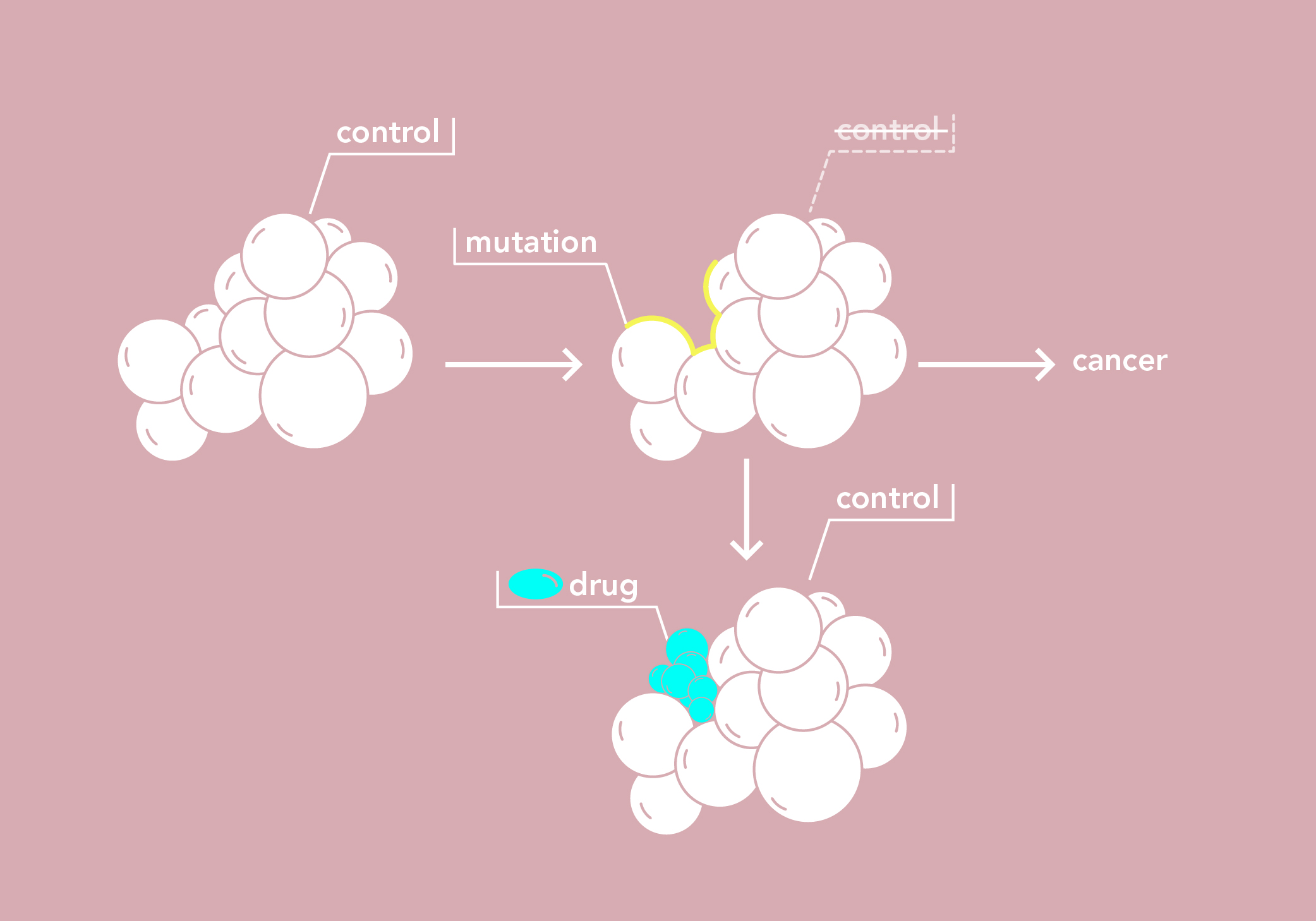Designing a drug against skin cancer
Melanomas are a type of skin cancer caused by the abnormal proliferation of melanocyte cells. The tumour cells originate from an “initiator” cell that has acquired a certain number of characteristics endowing it with the possibility of dividing indefinitely and in an uncontrolled fashion.40 to 60% of melanomas are caused by mutations in the melanocyte's DNA, that is de novo mutations that are frequently induced by exposure to sun. The DNA of different genes can be affected but, in 90% of studied cases, it is caused by a mutation in the DNA of a gene known as BRAF. The mutation is called V600E.
BRAF is a gene that codes for the B-Raf protein which is involved in regulating cell division. The V600E mutation permanently activates the B-Raf protein, which is no longer able to regulate cell division.
(1) the V600E mutation is specific to cancer cells
(2) the V600E mutation modifies the 3D structure of the B-Raf protein (video):
The B-Raf protein with the V600E mutation is an ideal target for drug design, in the hope of regulating cell division again.

This workshop will help you discover how bioinformatics is used:
Link to the workshop
You can then compare the effectiveness of the molecule you have just designed with the following drugs:
Vemurafenib (Zelboraf®) was put on the market in 2011 and fights melanomas by inhibiting the BRAF protein which carries the V600E mutation. Only patients whose DNA shows this specific mutation are treated with this drug.
Sorafenib (Nexavar®) is an anti-cancer drug on the market since 2005. It has been used against melanomas, but proved to be ineffective and has since been abandoned. Sorafenib does not bind to the mutated V600E form of the BRAF protein, but its natural form. This molecule also inhibits a number of other proteins that belong to the kinase family, also involved in regulating cell division. As a result, this drug is used to treat other cancers – of the kidney, the liver and the thyroid for example.


